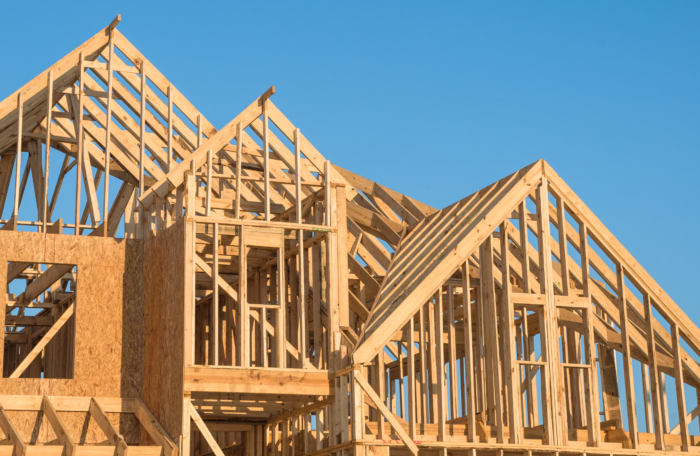Why have house prices and rents increased so much in New Hampshire? A new Josiah Bartlett Center for Public Policy study finds that residential land use regulations, mostly at the local level, are a major cause.
Examples of local regulations that prevent people from building homes include: minimum lot sizes, frontages and setbacks, single-family-only requirements, bureaucratic requirements for accessory dwelling units, maximum heights and densities, minimum parking requirements, historic and village district requirements, municipal land ownership, subdivision regulations, impact fees, and simply the unwillingness of zoning boards to issue variances.
Widely available measures show that New Hampshire is one of the most restrictive states in the country for residential development. By suppressing building, land-use regulations drive up the price of housing as demand rises. Removing or relaxing these regulations would allow prices to rise more gradually.
Consequences
The consequences of housing scarcity for our state are significant. This study finds that residential land use regulations are associated with growing socioeconomic segregation and slowing population growth.
As housing becomes more expensive, fewer people are moving to New Hampshire, especially to those towns that are most expensive. Those who stay are disproportionately wealthy and college-educated, while middle- and lower-income families leave because they cannot find affordable housing.
Costly housing in towns with better schools also limits families’ access to educational opportunity. Finally, the sprawl caused by anti-density policies such as minimum lot sizes increases drive times and road maintenance costs and worsens air and water quality.
Causes
New Hampshire municipalities have enacted these restrictions on growth for several reasons. First, there is a widespread perception that allowing home-building would increase the number of children in local schools. However, the other side of the home-building equation is that new home construction leads to substantial growth in the tax base, relieving the tax burden on the rest of the town. Moreover, school populations are falling across most of the state, and so adding more children would not necessarily require more spending. So the “fiscal” motivation for restricting home-building does not make much sense today.
Rent-seeking
The main reason for growing development restrictions seems to be “rent-seeking.” In other words, some homeowners in the towns with the biggest housing demand see zoning as a way of boosting their wealth by artificially limiting the supply of housing.
This process may have gotten out of hand now, though, as pandemic-driven housing demand has well outstripped supply. Many Granite Staters have seen their homes rise in value, but this rise may be merely notional, because it is now so difficult to find a new house after selling the old one. The rapid aging of the New Hampshire population makes reform to relax local planning and zoning regulations all the more crucial.
As the rent-seeking explanation would predict, the places with the most stringent rules on building new homes tend to be the ones that historically saw big growth in housing demand. Portsmouth, Hanover, and some of their surrounding towns are among the most regulated towns in the state, along with a few Lakes Region and White Mountains locations. Some of the wealthier suburbs of Manchester and Nashua – Hollis, Windham, and Bedford – are also near the top of the list.
By contrast, the inland Appalachian belt of New Hampshire, running from western Cheshire County to the North Country, is the least regulated part of the state. There’s a definite trend in the historical data, whereby towns that saw large growth in the 1960s and 1970s enacted restrictions that then choked off growth in the later 1980s and 1990s. By contrast, population density does not seem to correlate with increases in regulatory stringency, even though it may have been a motivation for towns to adopt zoning to begin with. Some of the towns with the strictest rules have low densities and very little industrial activity, like Hanover and Lyme.
Another correlation observed in the data finds that towns that lie nearby other towns that increased their restrictions on housing were themselves more likely to enact new restrictions on housing. In other words, municipal land-use regulation in New Hampshire looks like a kind of “arms race.” When one town tightens, others are also provoked to tighten so that they don’t get a disproportionate share of new housing construction. As a result, all towns end up with less construction and stricter regulations than they really want.
Policy solutions
To get out of the arms race and make decent homes affordable to Granite Staters of all ages and walks of life, policymakers and citizens have to understand how local land use regulations affect the supply and price of housing. Better policies will come from a better understanding of the downstream effects of these regulations.
In addition to showing how land use regulations affect housing supply and prices, this study suggests several state- and local-level policy changes that could provide relief.
At the local level, zoning ordinances could be revised to allow homes to be built on smaller lot sizes, with smaller frontages, and with smaller setbacks. Building permit caps could be removed. Multi-family housing options, such as duplexes and triplexes, could be allowed in additional locations. In urban areas, minimum parking and maximum height restrictions could be eased.
At the state level, the state could enact a regulatory takings compensation law, so that municipal governments would have to compensate landowners for new regulations that substantially take away the value of their property. The state could directly preempt the most egregious forms of exclusionary zoning, such as minimum lot sizes above a certain level and building permit caps. The state could also authorize towns to decentralize planning authority to neighborhood or even block levels. At such a small level, residents are unlikely to adopt rent-seeking forms of zoning, because builders and home-buyers could easily go elsewhere. State government could authorize municipal land-use compacts that would allow neighboring municipalities to offer multi-community planning, where the impacts of regulation on the whole commuting area could be considered. Finally, an open-enrollment law for public school choice would at least ameliorate one of the negative consequences of exclusionary zoning for middle- and low-income families: being locked out of good schools.
Top Ten Municipalities Where Housing Is Most Restricted
The study ranks N.H. municipalities by the inelasticity of their housing supply, that is, by how much local conditions, especially building and land-use regulations, restrict the ability to build new housing in response to rising demand. The ten most inelastic, regulated municipalities are:
- New Castle
- Rye
- Portsmouth
- Newington
- New London
- Hanover
- North Hampton
- Moultonboro
- Hampton Falls
- Waterville Valley
Download a copy of the full study here: Residential Land Use Regulations in New Hampshire Report
If you missed the event, the full video is posted on our YouTube channel here.
NOTE:








